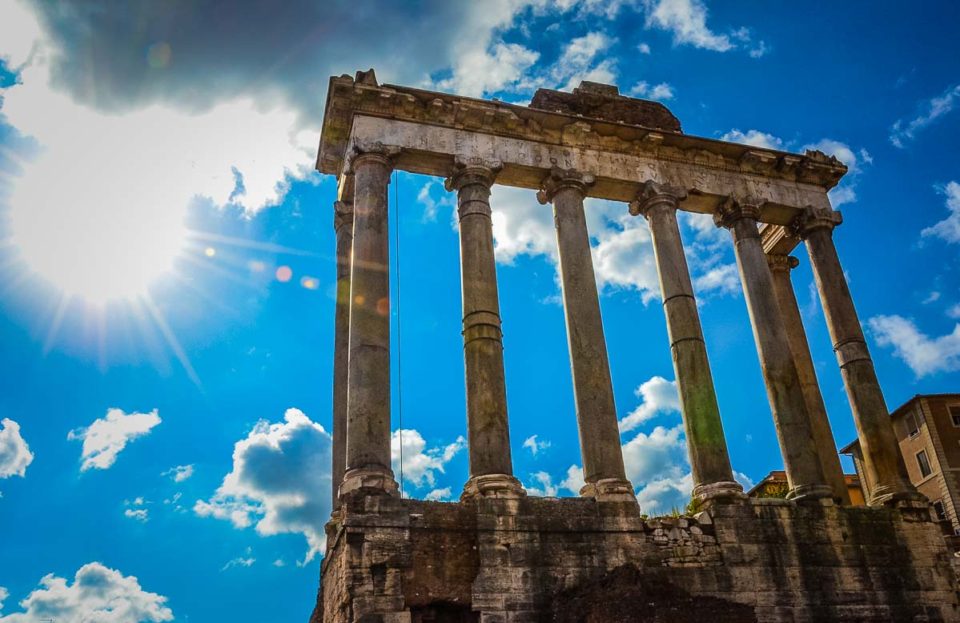
Table of Contents
How many days should you spend in Rome?
How many days should you spend in Rome? That's the eternal question. And the real answer is that you'll never run out of things to see in Rome. So allow plenty of time. I spent three months in Rome studying Latin, and Kris and I have been back multiple times. And, there are things we still haven't done that we want to do. We're going back later this year in fact specifically to fill a couple holes in our experience. But, if you're a first timer in Rome, honestly, four or more packed days should do the trick.
For that four day itinerary, here are some suggestions: Day 1, the Vatican with St. Peters, the Vatican Museums, and the Sistine Chapel: Day 2, the Forum and the Palatine Hill, with the Colosseum, the arches of Constantine and Titus; Day 3, the Pantheon, Area Sacra, the Piazza Navona, and the churches in the neighborhood, the Jesu, St. Andrea, Santa Maria Sopra Minerva: Day 4, wander around Trastevere, eating local food while exploring the churches of Santa Cecilia and Santa Maria.
That will give you a basic taste of Rome. But don't stop there. Take more time, if you can. Here's a list of many more ideas to productively fill your visit.
When is the best time to visit Rome?
Another good question: when is the best time to visit Rome? Here's our suggestion: winter. In summer, Rome is absolutely packed with tourists and you'll sometimes end up waiting hours in the hot Roman sun to get into something you want to see. For us, the best months to visit Rome, and Europe in general, are December and January. Failing those months, the shoulder months of October and November are better than summer. Yes, you have to wear a coat, but that's so much better than wasting time in lines. Also, hotels tend to be cheaper in winter.
When you think of things to do in Rome, keep one main thing in mind. Rome is the capital city of Western Art.
Yes, there is great stuff in other European cities. Paris, Madrid, Barcelona, Florence, and Amsterdam, all have their attractions. But for quality and quantity, the Eternal City has no equal. If you wonder why that was, consider that Rome was the capital of the two greatest empires the Western world has ever known: the Roman Empire of the Caesars, and the Christian Church. Both entities were spectacularly wealthy, and their rulers aggrandized themselves constantly by commissioning art.
From the extraordinary Greek sculptures of the golden age of Athens, which were both hijacked and copied, to the Egyptian obelisks sprinkled around the city by the notorious Emperor Caligula, to the high Renaissance of Michelangelo, Rome's rich history has manifested itself the best on its streets, museums, and churches.
So, if you are going to spend three days in Rome and the Vatican City, or three months, here's a list of things you have to see in Rome if you want to see the best. (Obviously, if you're only spending three days in Rome, you'll have to do some choosing.)
Some of them are obvious, so I won't spend much time discussing them. The only caveat I would offer is that you do a little reading up before you go, or at least go with a guide who has done some. Otherwise, you'll miss stuff. And, Rome has, in the words of my former Latin teacher, lots of stuff.
My first suggestion if you're going to visit Rome is to get this book. Before you go, or after you get home, Rome: Art and Architecture is highly recommended. It's not cheap, but it's a fantastic, well illustrated compendium of the art of Rome that will serve as a reference and a remembrance of your trip stay in Rome.
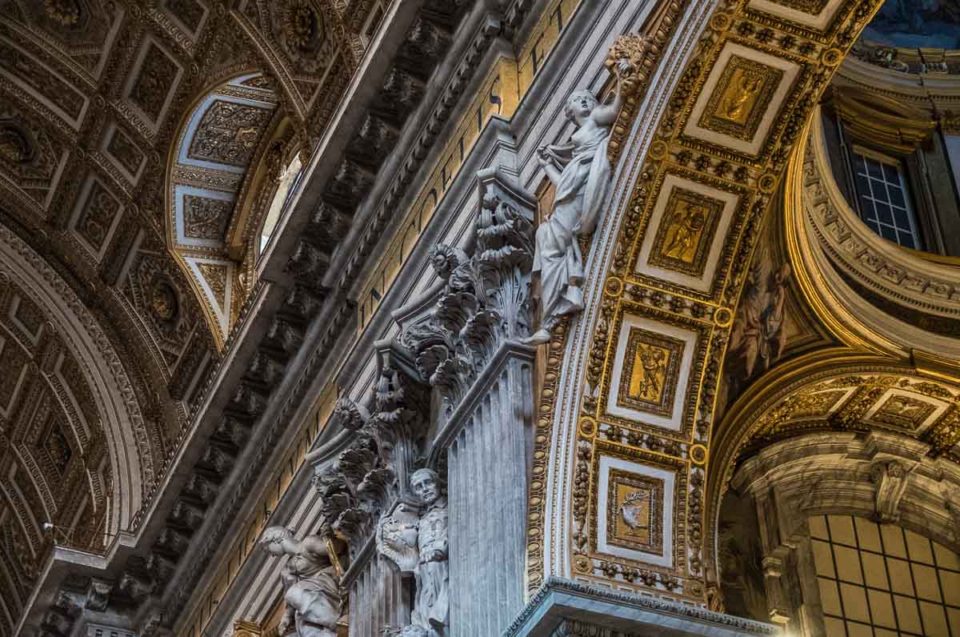
The Obvious Stuff You Have to See in Rome
If you're visiting Rome for the first time, or like us, for about the tenth time, there are sites that reward repeated visits. There is a reason they are among our favorite things to see in Rome. They are tourist attractions, yes, but so much more. Their importance among the plethora of the most iconic landmarks can't be over emphasized. They on the list of the best things to see in Rome for good reason.
The Basilica of St. Peter
Allow plenty of time to see St. Peter's Basilica. It is the biggest church in the world. There is a lot of spectacular sculpture in there, including of course, Michelangelo's early Pieta. Admission is free, but you'll have to stand in line. If you do the Vatican Museums with a guide you can get into St. Peter's too.
The Vatican Museums, including the Sistine Chapel
If you go on your own, you're going to stand in line for more than an hour, go through metal detectors (leave your day pack or purse at the hotel for this one – the Vatican is very picky about security) deal with people trying to butt in front of you, and get generally frustrated trying to get in. But, unlike so many other crowded attractions, these are worth the hassle. If waiting's not your thing, sign up for an early morning tour with Viator and get in ahead of the crowd before the museums open to the public. It costs a bit more, but it's really worth it.
I won't bother to tell you about the Sistine Chapel, because there's lots of information available. My best advice is to look out for a couple of things in the Vatican Museum itself: the painting over an archway by Raphael called The School of Athens, and the ancient statue of the Emperor Augustus. (Yes, there's lots of great ancient stuff in the Vatican Museums.) The guy pointing up in Raphael's painting is Plato, and Raphael's model for Plato was Leonardo da Vinci. By the way, don't take pictures in the Sistine. They ask you not to, not that most don't ignore that request. But, your little phone camera is never going to match the detail you'll get by just buying a book.
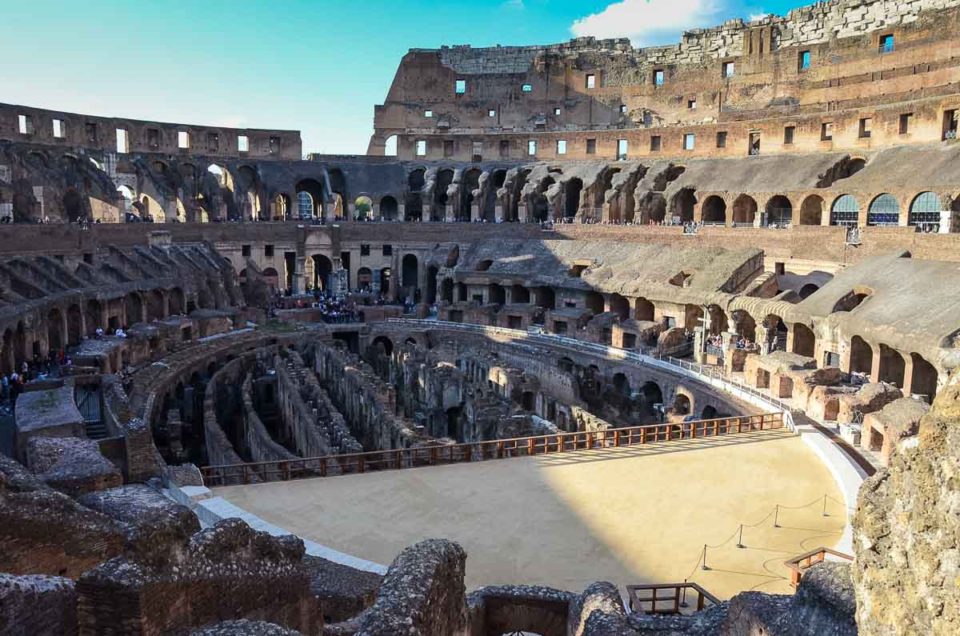
The Colosseum
Maybe the first thing to know is that it wasn't called that by the Romans. They called it the Flavian Amphitheater. It got its nickname from a huge statue of the Emperor Nero that was once near the site. If you're wondering what happened to the statue, pretty much everything to do with Nero, including his over-the-top palace, the Domus Aurea, was pulled down after his death., Anyway, getting into the Colosseum will be a similar experience to getting into the Vatican Museums. Long lines.
My advice, again, is hire a guide. You'll get to skip the lines, and you'll get to learn something on the side. A tip: entry to the Colosseum is on a combined ticket with the Roman Forum across the street. The lines for the Forum ticket booth are always much shorter. Get your ticket there, see the ancient ruins of the Forum and Palatine Hill, then go over to the Colosseum and skip the ticket line. Or, even better, get skip the line tickets to the Forum and Colosseum here.
While you're in Rome, have your photo taken in front of one of the Roman landmarks by a professional photographer. Check out Smiler.co to schedule your session.
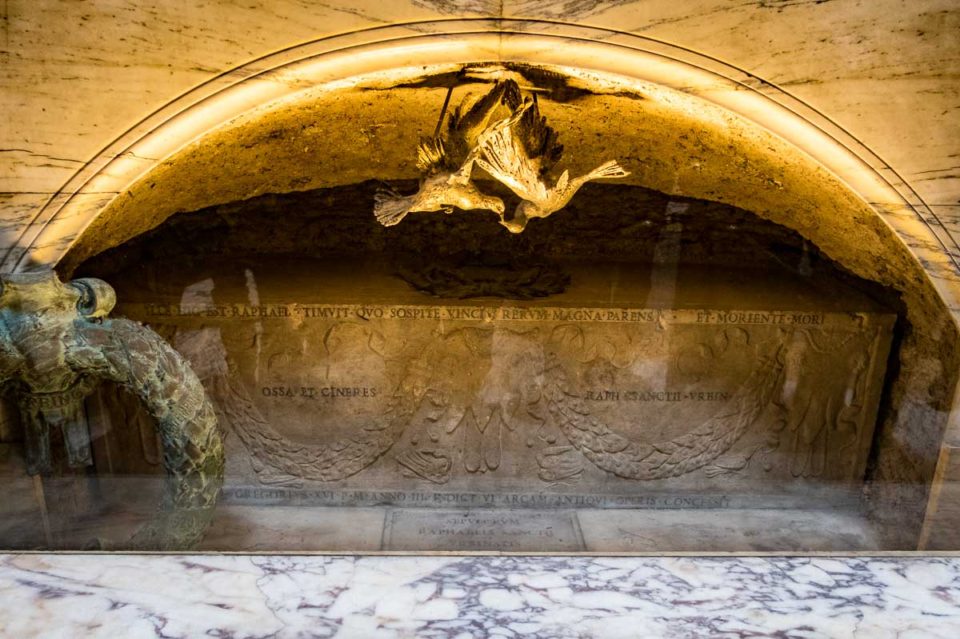
The Pantheon
This is my favorite building of ancient Rome. And not just because you can walk right into it. When you get there, look up at the dome and its open oculus and ask yourself, how the hell did the Romans make that dome across that span 2000 years ago? The interior was long since converted from a Roman homage to all their gods – Pantheon means “all the gods” in Greek, and no, I don't know why a Roman temple had a Greek name – but most of the stuff there now is pretty mundane. With one exception, the tomb of the painter Raphael.
The tomb is very simple, but the inscription above it is singularly poetic. In Latin, it's ILLE HIC EST RAPHAEL TIMUIT QUO SOSPITE VINCI RERUM MAGNA PARENS ET MORIENTE MORI. In my English: “Here lies Raphael. While he lived, Mother Nature feared she would be outdone. When he died, she feared she'd be undone.” I always stand in front of his tomb for several minutes on every trip to Rome. The inscription on the facade of the building, by the way, says “Marcus Agrippa, son of Lucius, when he was Consul for the third time, built this.” Romans used lots of abbreviations on their inscriptions.
Other attractions of Ancient Rome
The Forum and Palatine Hill
The Forum (on a combined ticket with the Colosseum) is downtown Ancient Rome. Temples of the Vestals, Saturn, the reconstructed Curia building, massive tumbled ancient ruins, the site where the funeral of Julius Caesar was held. They're all there. It's a lot to take in, and a guide is highly recommended or you'll miss a lot. Be sure to ask about the Cloaca Maxima, the big sewer, beneath your feet. The Romans had public plumbing and waste disposal more than 2000 years ago, which is more than you can say for the rest of Europe. Also, be sure to walk up the hill to the Palatine Hill and see the ruins of the home of Augustus and its wall paintings. It's mostly ruins, but some interesting bits are there. Walk to the edge of the hill, too, and survey the view over the enormous Circus Maximus. Think Ben Hur.
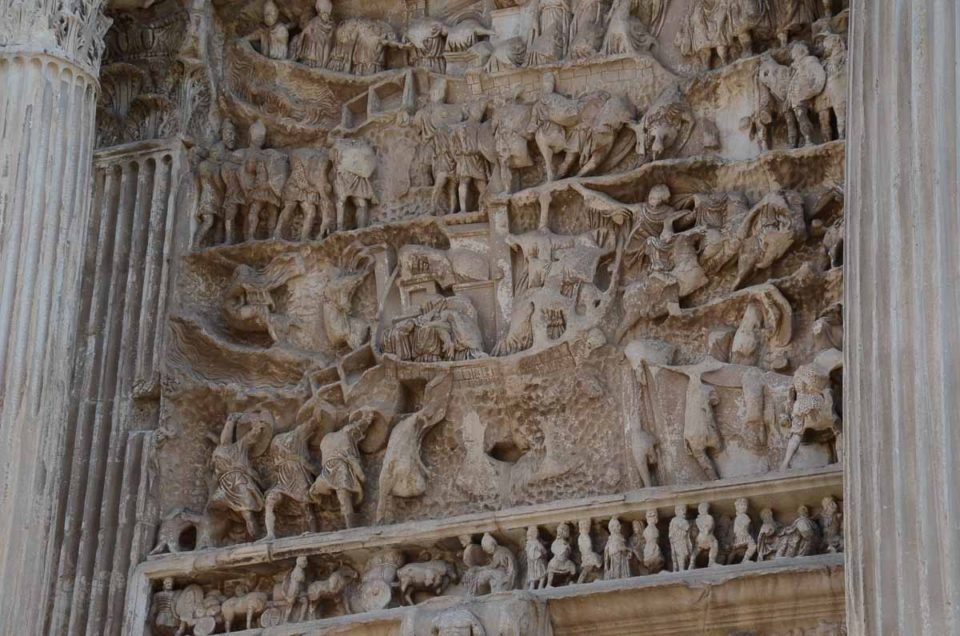
The Arches of Titus and Septimius Severus
The Arch of Titus, aside from being an impressive monument, has an interesting story. Titus was the general who sacked Jerusalem and there are graphics on his arch at the base of the Palatine Hill that show Roman soldiers carrying off the menorah and other spoils of the Temple of Jerusalem. The Arch of Septimius Severus, just next to the Temple of Saturn, has lots of scenes from that emperor's conquest of the pesky Parthians.
Arch of Constantine
Not too different in concept from the other two arches, but Constantine's arch, just across from the Colosseum, is notable for its size and for its architectural departure from the earlier styles. Constantine's arch also incorporates art from arches of other Roman emperors such as Hadrian. In that sense, it's a bit of a hodge-podge of reliefs. Again, it would be good to see this with a guide who can point out all the disparate elements. Probably worth noting, too, is that Constantine was the emperor who finally legalized Christianity in the Roman Empire.
Trajan's Column
Like the arches, Trajan's Column, which is up the road apiece from the Colosseum, is a commemoration and a propaganda piece for the Emperor Trajan and his victories over the Dacians. (Is there anyone the Romans wouldn't fight?) Of particular interest is the spiral construct up the column which graphically tells the story of Trajan's accomplishments.
The Ara Pacis
You have to like the Ara Pacis, the Altar of Peace, built by the Emperor Augustus, because it, in contrast to the other monuments erected by his successors noted above, celebrates the Pax Romana, the Roman Peace. It's a beautiful work, almost completely preserved, and now enclosed in a building and under glass. You can get up very close and see the iconography of Augustus both as a political leader and as a high priest offering sacrifices to the gods. Perhaps the finest example of the power of images used by the emperors to get their message across to a mostly illiterate population. (If that sort of stuff interests you, you should get the book The Power of Images in the Age of Augustus. Art as propaganda. Fascinating.)
The Circus Maximus
You have to use your imagination when you look at the Circus Maximus today, because nothing is left of the structure. But the area is still open and you can certainly make out the track that once hosted the famous chariot races. Today, the track is mostly used as a running course for fit Romans. As you go by the north side, you can look up past the enormous arches that support the Palatine Hill and imagine the Roman nobles peering down at the races.
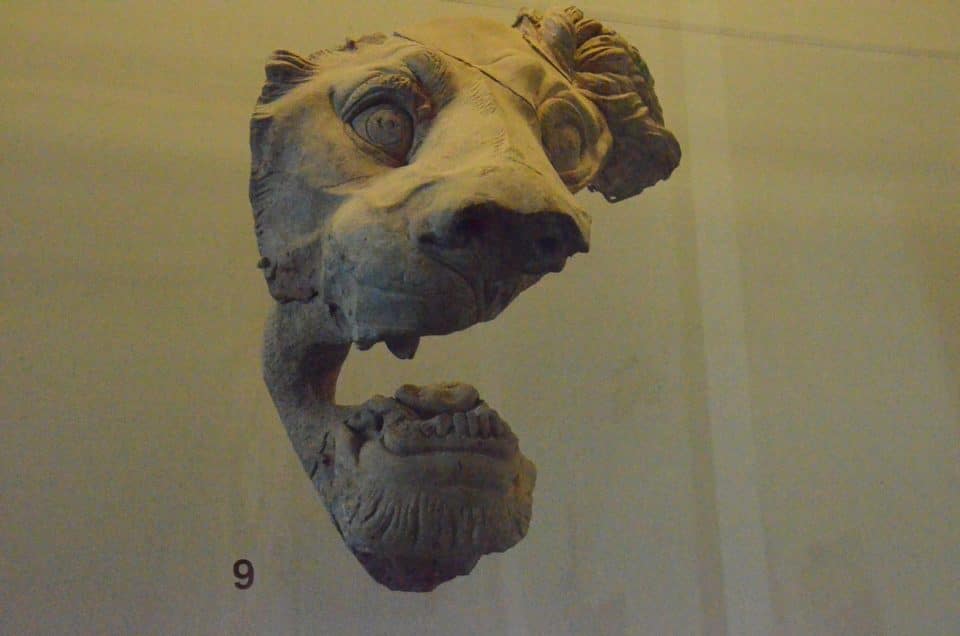
The Capitoline Museums
If you're interested in the art of the ancient Romans, you can't skip this museum on the Capitoline Hill above the Forum. It's relatively small museum just up the hill at the end of the Forum, and holds mostly decorative arts that would have been in Roman home in ancient times. Reliefs, busts, statues, frescoes, and mosaics. They're all there.
The Area Sacra at Largo Argentina
Just about two blocks from the Pantheon is one of the most recently discovered areas of ancient Roman ruins. There are four ancient temples in a row in a large square at the intersection of two busy Roman streets. The temples are in a state of ongoing exploration and restoration. And, you can often stand behind the barricades on the border that surrounds the site and actually watch the archeologists go about their business. The area, oddly, is also a sanctuary for stray Roman cats. The cats have been rounded up and neutered, and then released again into the site.
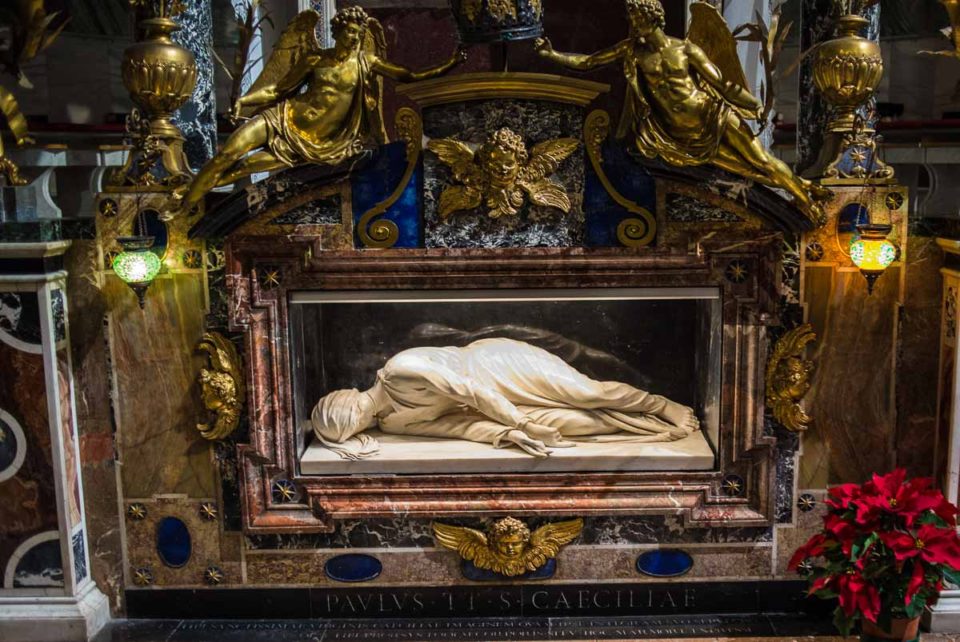
The Churches of Rome you should see
Santa Cecilia in Trastevere
Santa Cecilia in Trastevere was a lucky discovery for me. I had no idea it was there, but when I wandered in, I discovered what's come to be my favorite sculpture in Rome. Saint Cecilia was a young Roman noble woman who was martyred because she became a Christian. As the story goes, it took three blows of a Roman sword to sever her neck. The sculpture depicts her lying serenely in death, her head turned away, but the slice on her throat visible upon close inspection.
Santa Maria in Trastevere
Santa Maria in Trastevere is one of the oldest churches in Rome. It anchors the main square of the Trastevere neighborhood, and overlooks lots of charming side streets with lots of traditional family restaurants and cafes where you can spend your time after wandering around the church and gazing lovingly at the spectacular mosaics.
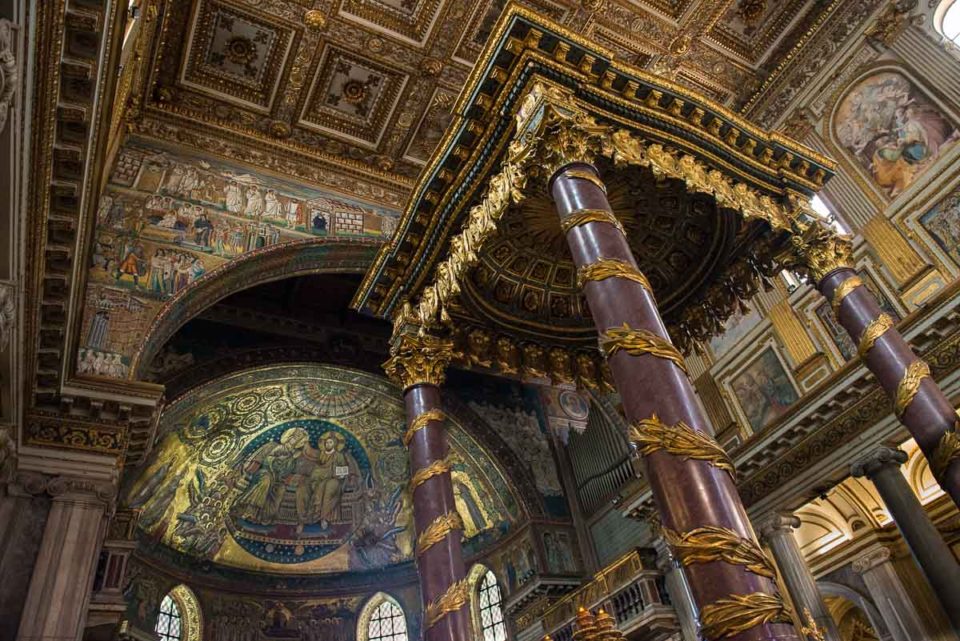
Santa Maria Maggiore
One of the Vatican churches “outside the walls” of the actual Vatican territory, it is the largest church dedicated to Mary in Rome–hence the name. It was built originally in the 5th Century A.D. which also makes it one of the oldest churches in Rome. Since then it's been expanded and redecorated, but like so many of the older churches in Rome, the original Byzantine altar mosaics have been preserved.
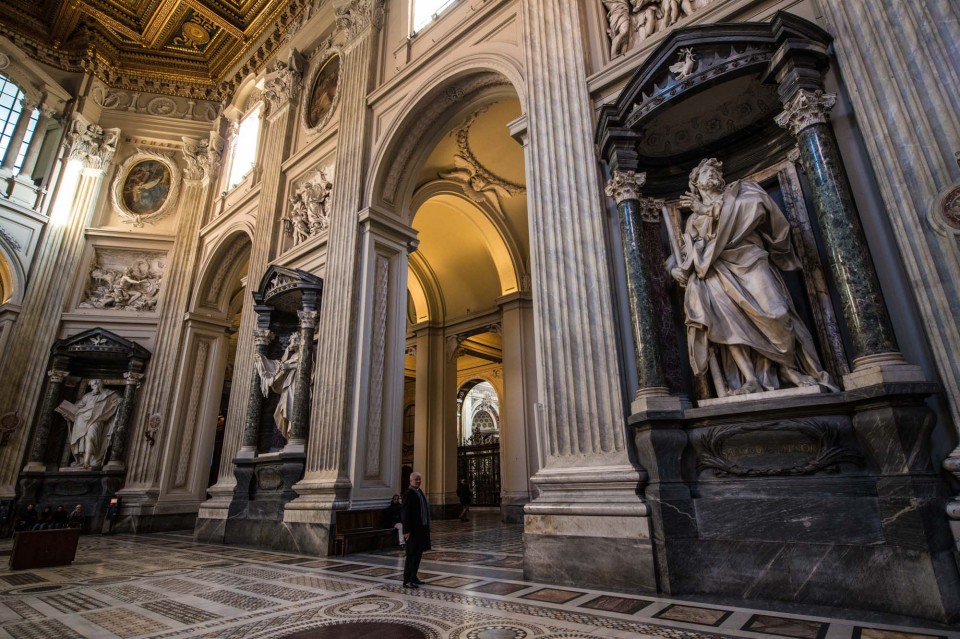
Saint John Lateran
Saint John Lateran, another of the Vatican churches outside Vatican City, is the actual Papal church. It contains the seat of the Pope in a separate hall. It is the oldest church site in Rome and was originally built in the 5th Century. But after a disastrous fire and an earthquake or two is now an 18th Century Baroque masterpiece. It is among the largest churches in Rome. Of particular note is the massive nave, lined with huge statues of the 12 Apostles, plus Saint Paul. Awesome, in the true sense.
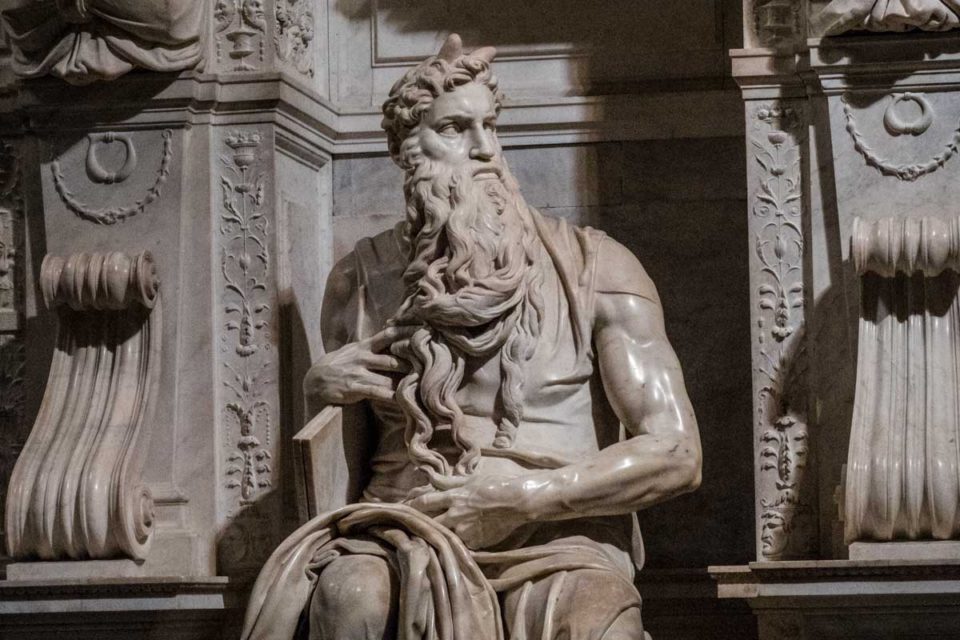
Saint Peter in Chains
There's a lot of history behind this church, but the main reason to go there is it's the home of Michelangelo's famous statue of Moses–the one with the horns coming out of his head, which is the result of one of the classic translation mistakes of history. It seems Saint Jerome, who translated the Bible from Hebrew to Latin, confused the words for radiated light with horns. So, Michelangelo took his cue from the Bible, and you have an incredible Moses–with horns.
Santa Maria Sopra Minerva
There are three reasons to make note of this church, which is very near the Pantheon. It got its name “on top of Minerva” because it was built on top of a Roman temple to the Egyptian goddess Isis. And the Church guys got it wrong and thought is was a temple of Minerva. Or so say the archeologists. It has a statue by Michelangelo of the risen Christ next to the altar, and a Michelangelo always makes a church worth a visit. And third, just outside the front door is a charming elephant, designed by Bernini, with an Egyptian obelisk on his back. On the base of the elephant's perch is an inscription that I rather like. Another bit of Latin poetry that translates as “You, whoever you are, sees that figures of wise Egypt sculpted on the obelisk are being carried by an elephant, the strongest of beasts, and understand that it is a symbol of a strong mind sustaining solid wisdom.”
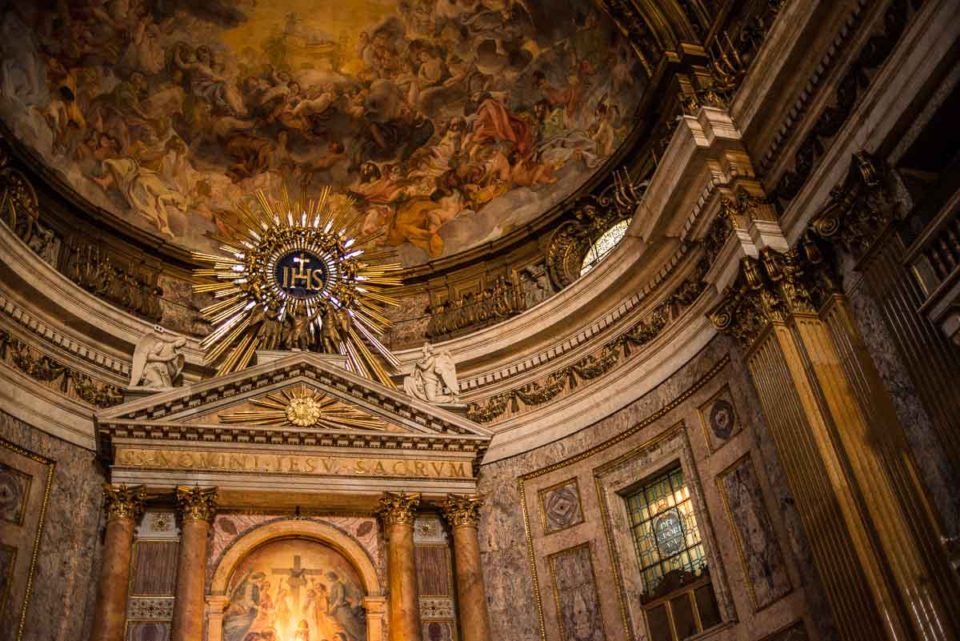
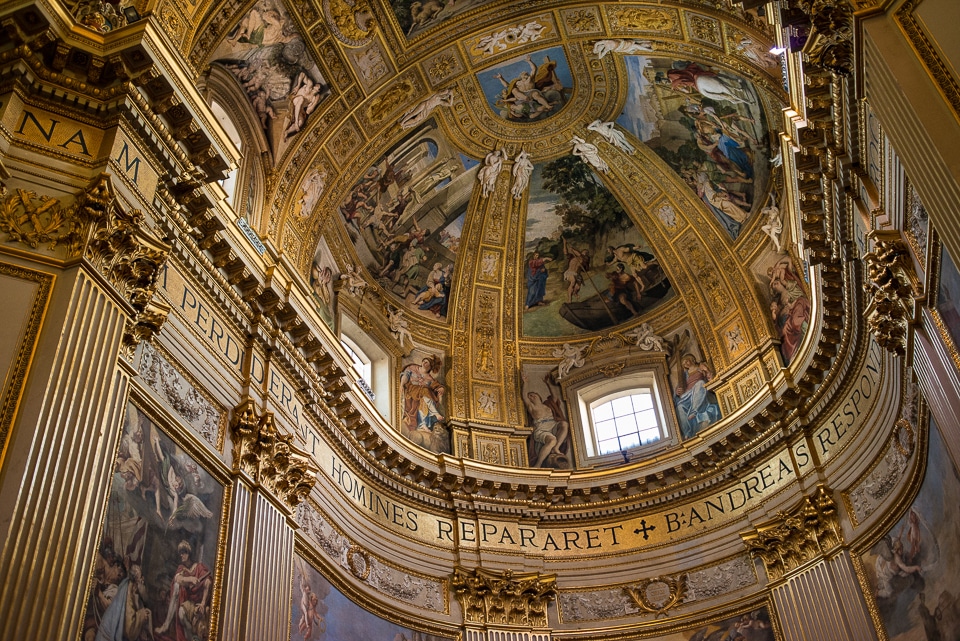
Saint Andrew and the Jesu
The churches of Saint Andrew (Sant Andrea) and the Jesu (Holy Name of Jesus–the Jesuit order's church) are right next to each other and are both among the best examples of what the pure Baroque style combined with very wealthy donors have wrought in Rome.
The Galleries, Public Art, and other stuff you should see in Rome
The Borghese Gallery
The Borghese Gallery is one of the most famous art galleries in the world. It is housed in the former Villa Borghese Pinciana. The gallery houses a considerable part of the paintings, sculpture and antiquities collected by Cardinal Scipione Borghese, the nephew of Pope Paul V, who reigned at the beginning of the 17th Century. The Galleria Borghese features paintings by Caravaggio, Raphael, Titian, Perugino, among others. Sculpture in the gallery includes works by Bernini and Canova. What I like about the Borghese is that admission is restricted, so it's never too crowded. Be sure to buy your tickets in advance.
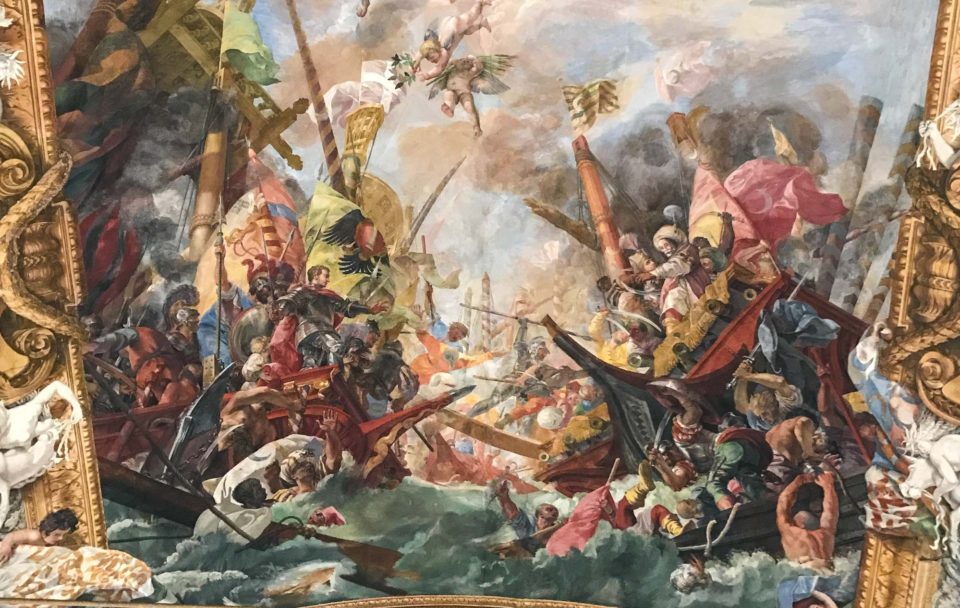
The Colonna Palace
The Palazzo Colonna is a baroque masterpiece and the home is a work of art in itself. The grounds of the Palazzo are right near Piazza Venezia at the top of the Roman Forum, opposite the Colosseum. Palazzo Colonna stands out from almost every other historic Roman church, museum, or palace, because it is still a residence. It's also a museum with limited visiting hours, but four Colonna brothers and their families currently live in the palace. So when it comes to guided tours of Rome, this is an exceptional one. You will need to book in advance on the Palace's website or with Get Your Guide.
The Trevi Fountain
This fountain (Fontana di Trevi) was the subject of a sappy 1950s movie, Three Coins in a Fountain, yes, but also figured in Federico Fellini's masterpiece La Dolce Vita. It's pretty, and it's the largest fountain in Rome. It's been completely scrubbed and restored in the last few years, so worth a look. Hey, you may not think its the best, but it is good. And, the €3000 per day tossed into the fountain subsidizes food for the poor of Rome.
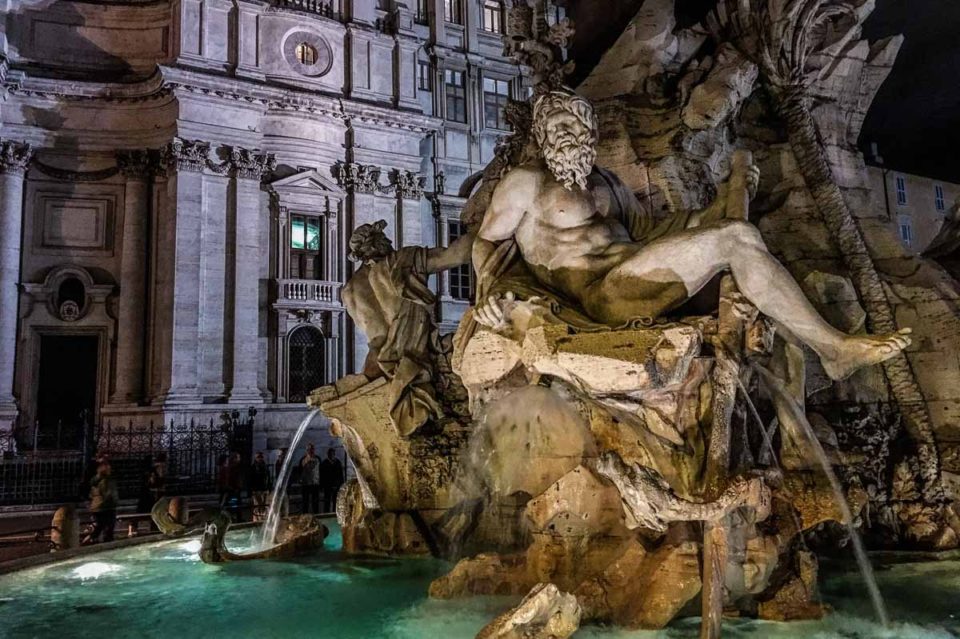
Piazza Navona with fountain and palace and church
My real favorite fountain in Rome is the Fountain of the Four Rivers (Fontana dei Quattro FIumi) by the great sculptor Gian Lorenzo Bernini in Piazza Navona. This fountain also was featured in a movie, Angels and Demons. But don't hold that crappy movie against it. The Piazza was built on the foundations of the stadium of the Roman Emperor Domitian, which you can see from its shape. It's sort of a smaller Circus Maximus. The Piazza also has two other smaller fountains and the Church of Saint Agnes in Agony and the Pamphili Palace, which is now the Embassy of Brazil.
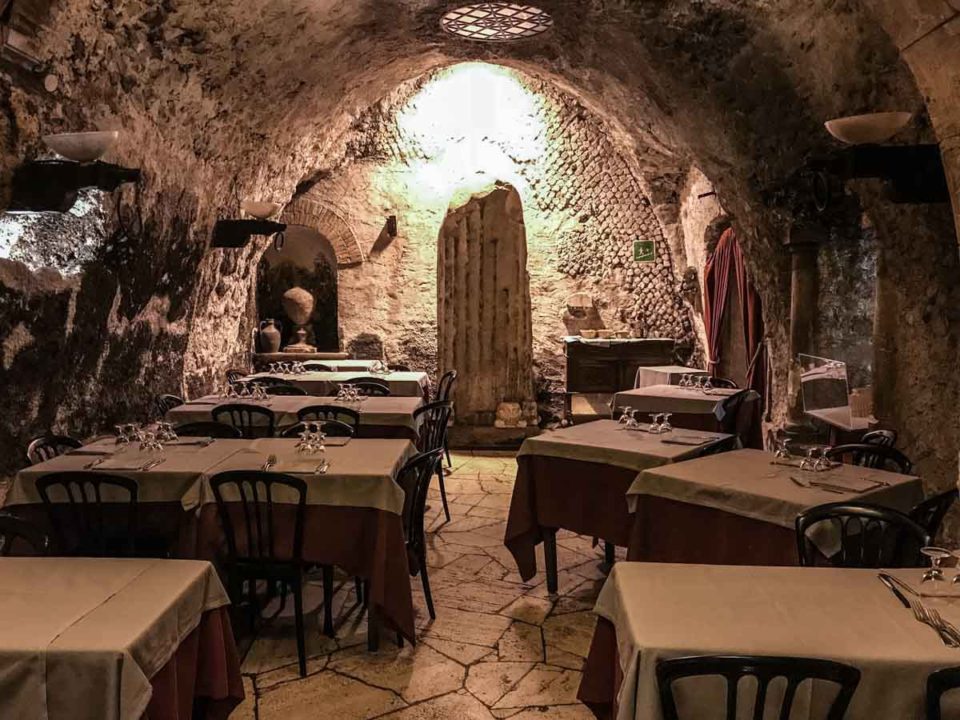
Campo de' Fiori
A former meadow, thus the name which means “field of flowers” the Campo hosts a daily flea market, which really is the best reason for a visit. But, even cooler among the historic sites of Rome, is the Ristorante da Pancrazio, just off the plaza. The Pancrazio, aside from having the best fiori de zucca (fried zucchini flowers) I've ever eaten, sits atop the ancient Theater of Pompey, which is where Julius Caesar was assassinated. The owners of the restaurant have taken it upon themselves to excavate the theater under their restaurant, and if asked, will gladly show it to you.
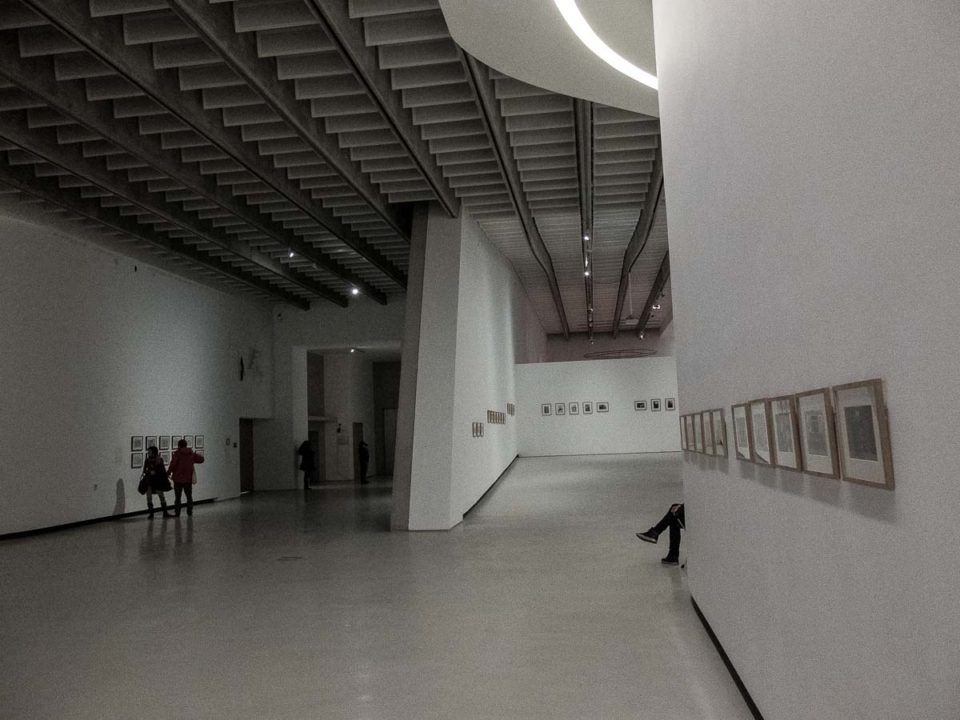
MAXXI Museum and surrounding architecture
North of the Piazza del Popolo, the upper reaches of classic Rome, is the so called “modern” part of Rome. That's the area that hosted the 1960 Summer Olympics and now sports the modern music complex and the extraordinary MAXXI Museum of modern art and design. If all that ancient and church stuff begins to be too much, this is the place to retreat.

Day trips from Rome
Tivoli Gardens and Hadrian's Villa
Take the train out to Tivoli from the Tiburtina Station. They leave about every hour and, last I looked, cost about €6 round trip. Start with the gardens at the Villa d'Este, which were originally a private retreat and are now a State museum. You can take a tour of the expansive gardens, with their fountains, or just wander around on your own. But leave time for Hadrian's Villa. The Emperor Hadrian reigned during the 2nd Century and presided over the greatest land expanse of the Roman Empire. Like so many Romans before and after him, he sought refuge from the heat of Rome in the hills of Tivoli. The Villa is about 5 kilometers from the Gardens, so take a taxi. You can arrange a tour of Hadrian's Villa and the Tivoli Gardens here.
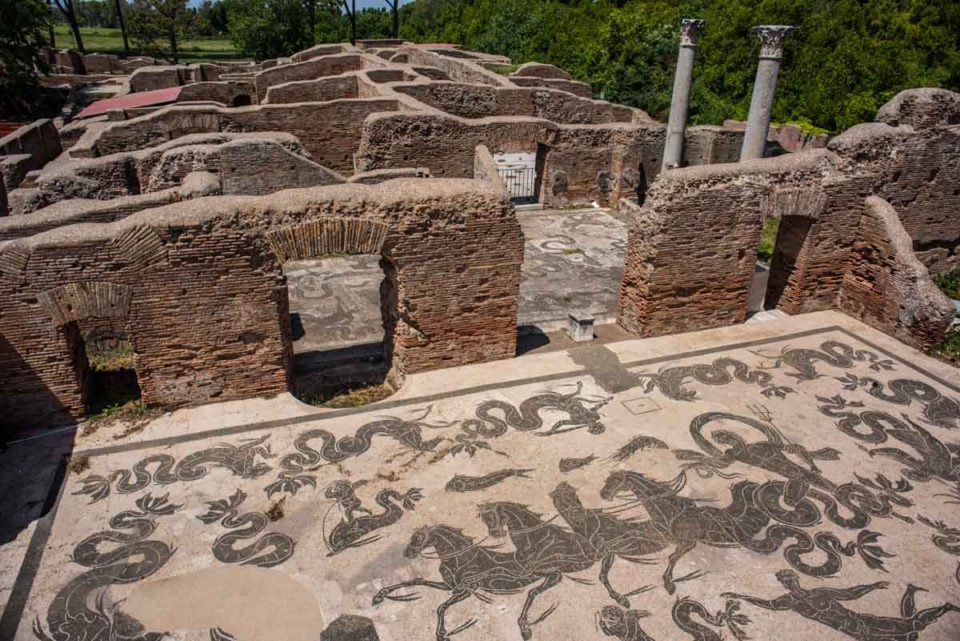
Ostia Antica
Ostia was the port of ancient Rome, and the visit again involves a short train trip. Ostia is very well preserved and will probably give you a much better idea of what a Roman town looked and functioned like than all your wandering about the city of Rome would ever do. Be sure to note the shops, which often have floor mosaics depicting the business. The attached museum has a trove of sculptures from the city and adjacent necropolis. Your entry ticket (€12) gets you in there, too.
The best way to get to get to Ostia Antica is to take the TrenItalia train from Tiburtina (or any other intermediate stop such as San Pietro or Trastevere) to the Ostiense stop. (You can also take the Metro to Porta San Paulo, if that's easier for you.) From the Ostiense train stop, you can walk right over to the adjacent Metro station (Porta San Paulo) and take the Metro train to Ostia Antica. From the Ostia Antica station, it's about a 500 meter walk to the entry of the ancient city. Look for the signs that say Scavi, which is Italian for excavations. The train tickets are a couple of euros, and the Metro tickets are €1.50 each way. You can buy both at machines in the stations. The journey will take about half an hour.
Best walks in Rome
Centro Storico
This is your landmark tour of the old city center and will encompass many of the archaeological sites named above. Piazza Navona, the Pantheon, Santa Maria Sopra Minerva, the Area Sacra, the Campo de' Fiori, the Tiber Island, the Ara Pacis, and more. Also there are many churches that I haven't picked out for particular notice above. But they're worth seeing, and you'll miss them unless you walk. The Chiesa Nuova and Saint Augustine are worth including on your amble.
Trastevere
The thing about walking around Trastevere is not to hit all the landmarks, (other than Santa Maria and Santa Cecilia.) But just get lost, wander into the shops, including the best English language bookstore in Rome on Via del Moro, and just enjoy the ambiance. Stop on the street and have a coffee. And don't have a cappuccino unless it's breakfast. (Also, don't order a latte unless you want a glass of milk.) I suppose I should also mention that the word Trastevere means “across the Tiber,” just in case you were wondering.

From Trastevere over the Janiculum Hill to the Vatican
If you want to get the best views of all of Rome from above, walk up to the top of the Janiculum Hill on the west side of the Tiber River. You can just sort of meander north from Trastevere, keep going up, and you'll eventually get to the top of the hill and the monument to Garibaldi, who united the city states of Italy in the 19th Century. Keep going down the north side of the hill and you'll find you're at the back side of the colonnade that fronts Saint Peter's Basilica. You used to be able to walk right into the square, but now, because of security, you'll have to walk around to your right to the main entrance and go through the hordes of tourists, like everyone else.
What to eat in Rome
You can eat some very expensive meals in Rome, but if you avoid the obvious tourist locations, you can do much better, and for less. Here are my three general recommendations of where to find your real Roman food.
Pasta and salad in any of the small family owned restaurants on the Via dei Pastini just off the Pantheon plaza. There's also a great ice cream store at the end of the block.
Pizza in any small pizzeria in Trastevere. Look for the lines. It's usually cheap and good. Have the wine. Alternatively, take the Devour Tours food tour of Trastevere. You won't be disappointed.
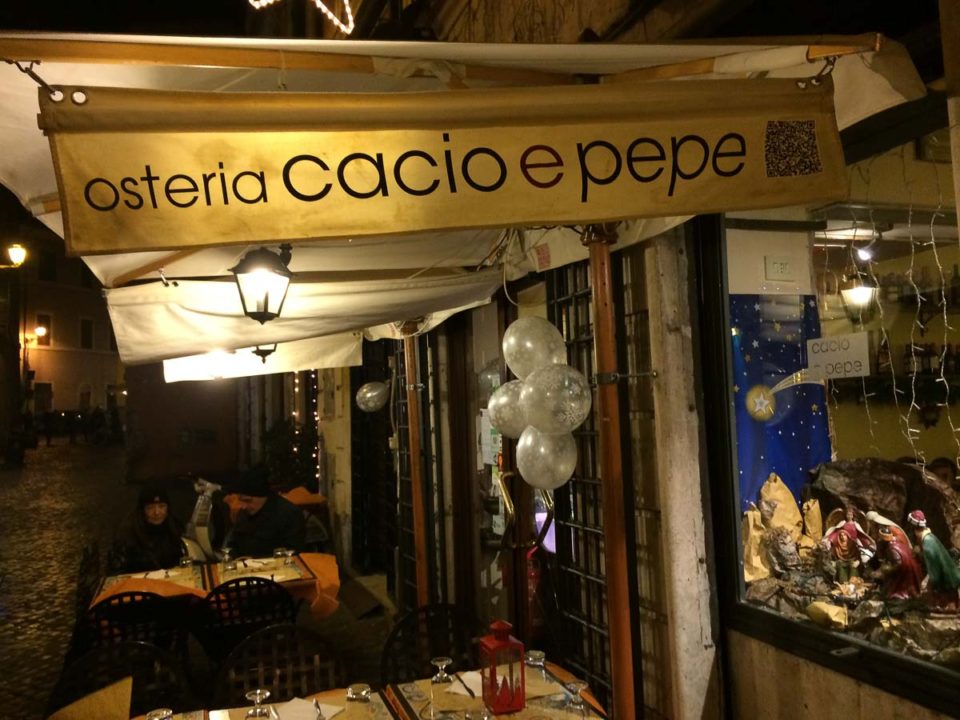
Cacio e pepe, (literally cheese and pepper,) the most traditional Roman pasta dish, at Osteria Cacio e Pepe in Trastevere. Have the tart white wine with the cheesy pasta. Trust me on this.
Many of the list of things to see and do in Rome are UNESCO World Heritage sites in Italy. Click the link to see a full list of Italian World Heritage sites with links to the ones we've visited.
Where to stay in Rome
We like to stay in one of three areas in Rome: the Historic District around the Pantheon and Piazza Navona, the area north of the Vatican, which has several nice family-owned small hotels, and, our favorite, Trastevere. They all have their advantages, mostly centering around what you're planning on visiting. I should also add, that the area around the main train station, Termini, has cheaper accommodations than the others I've mentioned, but the neighborhood is a little more business and a bit noisier than the other's I've mentioned. Of course, all Rome is noisy, but what big city isn't?
Get a Rome hotel from Booking.com
Tours in Rome
If you're not a lifelong student of Roman art, culture, and history, like we are, (or even if you are) you'd do well to take a guided tour of some of the things that interest you.
Also, here are some Rome tours from Get Your Guide, with some links to tours into some attractions that will hook you up with a tour guide and let you skip the lines. That alone is worth the price of admission.
Context Travel offers tours that are led by PhD level historians and art historians. If you are interested in getting into the deep background of Rome, a Context Travel tour of Rome is probably for you.
Up Your Travel Skills
Looking to book your next trip? Use these resources that are tried and tested by us. First, to get our best travel tips, sign up for our email newsletter. Then, be sure to start your reading with our Resources Page where we highlight all the great travel companies and products that we trust. Travel Accessories: Check out our list of all the accessories we carry to make getting there and being there a lot easier. Credit Cards: See our detailed post on how to choose the right travel rewards credit card for you. Flights: Start finding the very best flight deals by subscribing to Thrifty Traveler. Book your Hotel: Find the best prices on hotels with Booking.com. See all of the gear and books we like in one place on our Amazon shop.Got a comment on this post? Join the conversation on Facebook, Instagram, or Threads and share your thoughts!

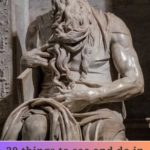

Comments are closed.